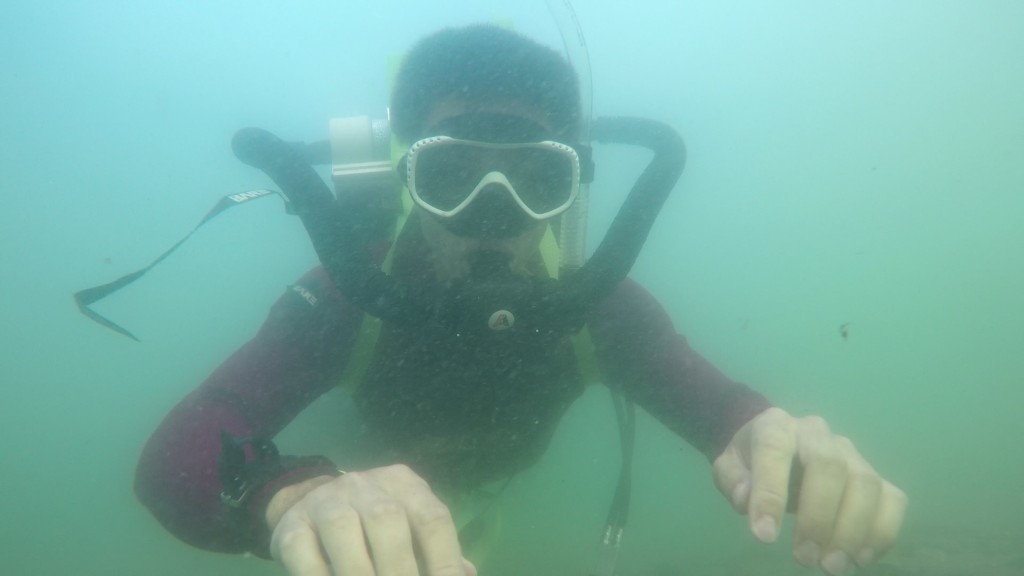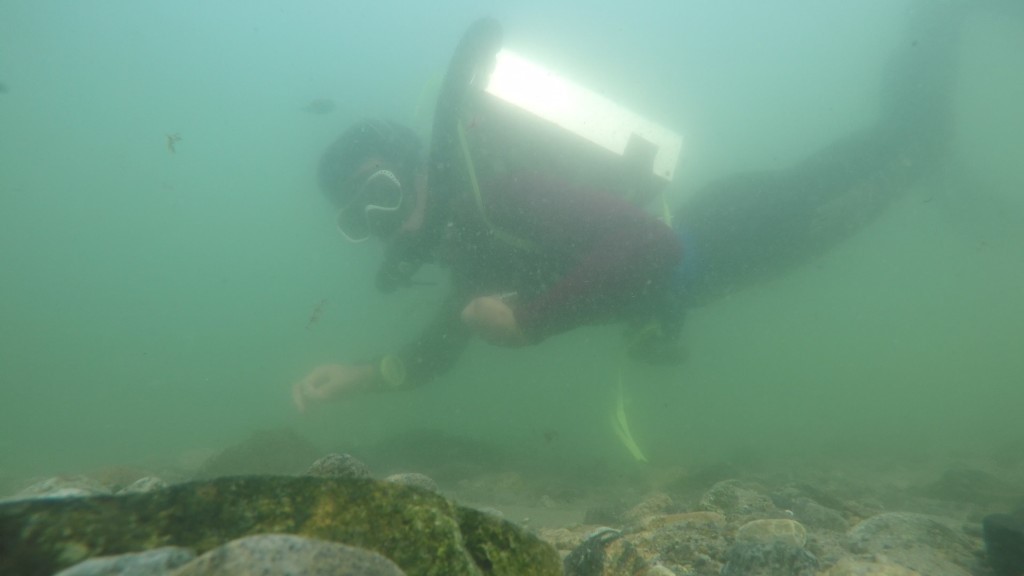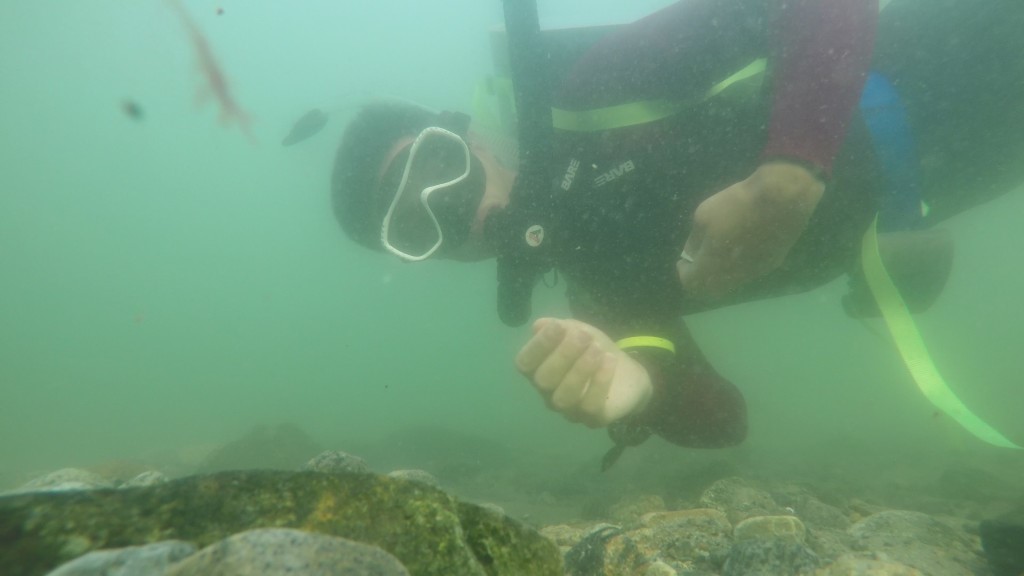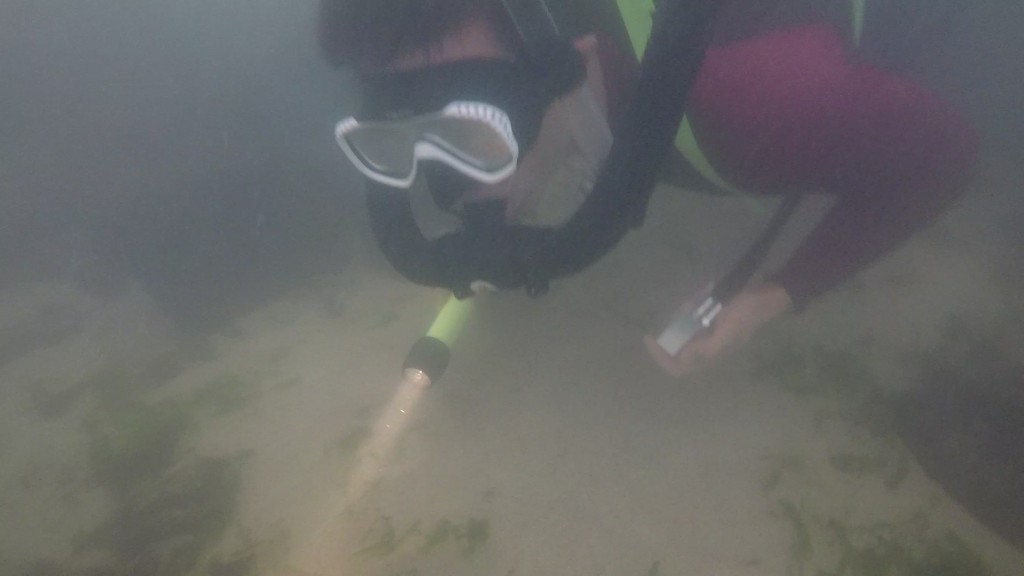Averie Louie oxygen rebreather prototype
Avery Louie send me information about his diving projects. He worte some very interesting articles about building rebreathers and a pressure pot. Search for Aylo for his adventures. His website can be found here: https://aylo6061.com/, enjoy!

Diving in Rockport MA
At this point this rebreather has been dived “wet” four times and it seems like a good time to make some notes on how it preforms. It certainly seems adequate-to-usable as an underwater breathing device, and as of the latest dive, I have even achieved a semblance of neutral buoyancy.
DIVE PROCEDURE

Building the unit up in Acadia ME
This is not a definitive “How to dive an O2 rebreather” manual. This is how I dive my scary prototype rebreather, usually alone, and unsupervised. I have no formal training and you shouldn’t use this as a basis for any kind of diving. That said, here is what I do to dive this thing:
The first step is to assemble the unit, including packing the scrubber. The scrubber should be filled with an appropriate amount of sorb appropriate for the dive (or more). As previously discussed, its about 4″ per cylinder of oxygen, for this given scrubber. The sorb should be shaken to allow to settle, and then the screen and spinner (see drawings) should be screwed on tight. At the end of this step, the oxygen should very slowly and very carefully be turned on, but not injected into the system yet.
The second step is a 3 minute pre-breathe. The goal of the pre breathe is to ensure that all systems, such as the MAV and regulator, are operational, and to warm up the scrubber. After putting on a dive mask, suck all the air out of the couterlungs and exhale it through the nose into the atmosphere. I exhale completely through the nose to empty the lungs, then start to fill the counterlungs and inhale. This ensures that there is minimal nitrogen in the system. Having too much nitrogen could cause a loss of consciousness if the mix goes hypoxic (hilariously unlikely with an O2 rebreather). Excess nitrogen could also allow nitrogen loading (leading to the bends). At the end of the pre-breathe, have a buddy or use a mirror to check the canister for condensation and for warmth. Condensation and warmth indicate that the CO2 scrubbing reaction is proceeding in the absorbent.
The third step is a bubble check. Divers should descend to 2-3 feet under the water and check each other (or use a mirror) to check for bubbles coming out of the unit- there should not be any. Bubbles coming from the unit call for an immediate abort- its not a rebreather anymore, its open circuit!
If the bubble check is negative for bubbles, the dive can proceed for up to 10 minutes (or other gas/scrubber limits). It is recommended to terminate the dive after 10 minutes since there is no convenient way to see how much gas is left (no SPG). This does not take into account chronic oxygen exposure toxicity of O2 at depth, but it is difficult to run up the O2 clock in only 10 minutes.
Once back on the surface, the DSV should be switched to the surface position and the diver can come off the loop.
BUOYANCY

Rockport again! Look at that trim! Look at that left hand desperately grasping the MAV!
Buoyancy has been a challenge with this unit, but only because I am improperly weighted, since I only have one 10lb weight. The unit itself is about neutral to negatively buoyant in fresh water, and I am about neutral to negative in seawater (even with a partially inflated lungs). This leaves the wetsuit and a few liters of air to be balanced out by the weights- way less than 10lbs.
On open circuit, this additional weight can be balanced with a sac of air that the diver can fill and empty (a buoyancy control device). The remaining net small amount of positive or negative buoyancy is trimmed out by modulating breathing. Deep breaths and spending more time with more lung volume increases buoyancy, and the opposite decreases it.
With a rebreather, this is completely useless, since breathing out simply moves the gas to the counterlungs, which are still attached to the body. So the whole loop volume is what needs to be trimmed against the rest of net buoyancy of the diver, which, in this case, is very negative with 10lbs of weight.
However, it is still less than the volume of the counterlungs, so it is possible (as seen above) to achieve neutral buoyancy!
TRIM
Trim has not been a big issue so far. Folding up my legs moves my center of mass close to the center of buoyancy, so I don’t have much trouble staying horizontal in a nice streamlined position. This might need more investigation, since I have not dived it in particularly calm water yet, and most of my time has been spent swimming, which helps keep a good trim.
ATTITUDE AND WORK OF BREATHING

Diving with an attitude
Work of breathing (WOB) is a big figure of merit for rebreather design. Work of breathing depends on counterlung (CL) position, and for any given rebreather the CL position changes as the diver moves around. In particular, pitching and rolling change the pressure of the lungs vs the counterlungs. I don’t have a way of measuring WOB, but it has been breathable through 90 degree rolls to either side, and about 30 degrees of pitching up. Pitching down tends to result in incurable mask squeeze, since the nose essentially makes the mask the lowest connected air volume. It is much more comfortable to avoid that, unless you really want to look at something in a deep hole. On another note (often echoed by rebreather divers), I have not had any issues with dry mouth or feeling “thirsty” during my dives, since the air is quite warm and humid when breathed- even in the chilly waters of the northeast.
ERGONOMICS

Reflexively, I tend to hold the MAV in my left hand, ready to push the button.
A couple easy, but substantial improvements could be made to the harness. It is very inconvenient to put on, involving an intricate dance of bending over and weaving the harness behind your back, while balancing the unit on your shoulders. Bolting it to a backplate or having seprate waist and hip connections (maybe even a chest strap) would make it much easier to don, and easier to tighten to prevent it from floating around underwater.
Additionally, it would be helpful to be able to clip off the MAV so that it lives somewhere on the users chest, enabling either hand to find and use it.
On the bright side, the hoses are fairly non-intrusive when diving, even though they are somewhat long, and even thought the unit is wide, it does not impede any movements to the front of the body, which is where the arms usually are while diving.
CLEANING AND STORAGE

A nice storage/washing bin!
The unit is pretty small, and since most parts are plastic andhave no moving parts, it doesn’t require a huge production for cleaning. Everything just goes into the storage bin, gets rinsed, and then is set in the storage bin to dry. The two exceptions are the MAV and the Oxygen valve- the MAV gets soaked, and the oxygen valve gets soaked, while worked open and closed. These soaks happen with hoses installed, since I want to prevent the inside surfaces from getting salt/salt crystals inside of them.
FINAL THOUGHTS
This thing is pretty darn fun, and not as sketchy as I imagined it would be. It really does let you get a lot closer to fish and animals. I’d love to take it somewhere shallow and calm and clear, like blue heron bridge or crash boat beach, or a nice warm lake somewhere.
Avery, thank you for sharing your build on therebreathersite!

Therebreathersite was founded by Jan Willem Bech in 1999. After a diving career of many years, he decided to start technical diving in 1999. He immediately noticed that at that time there was almost no website that contained the history of closed breathing systems. The start for the website led to a huge collection that offered about 1,300 pages of information until 2019. In 2019, a fresh start was made with the website now freely available online for everyone. Therebreathersite is a source of information for divers, researchers, technicians and students. I hope you enjoy browsing the content!
